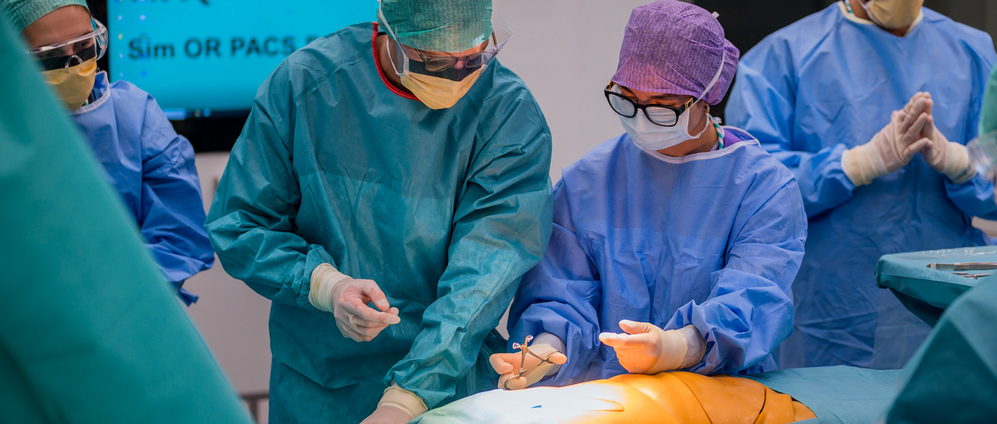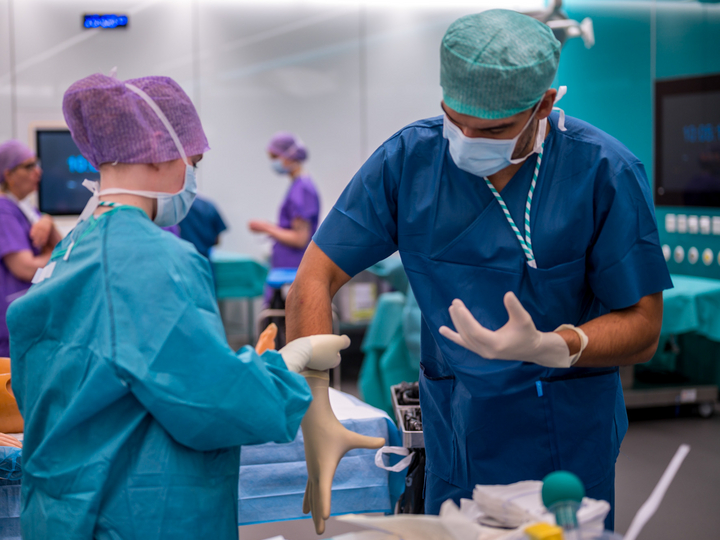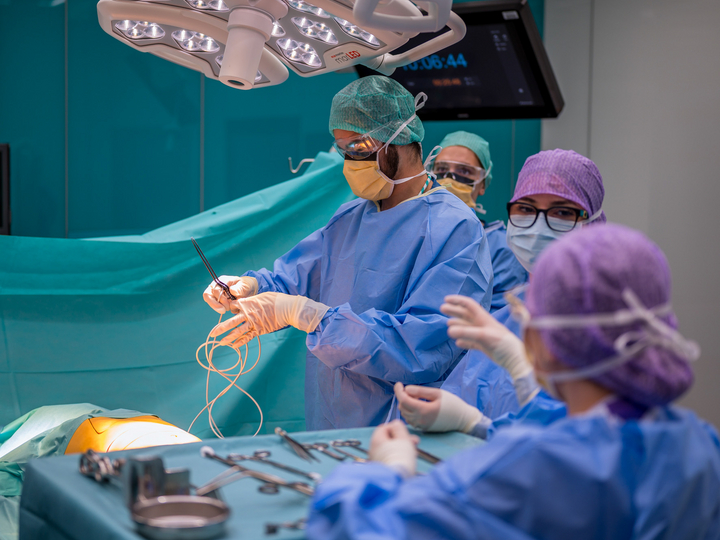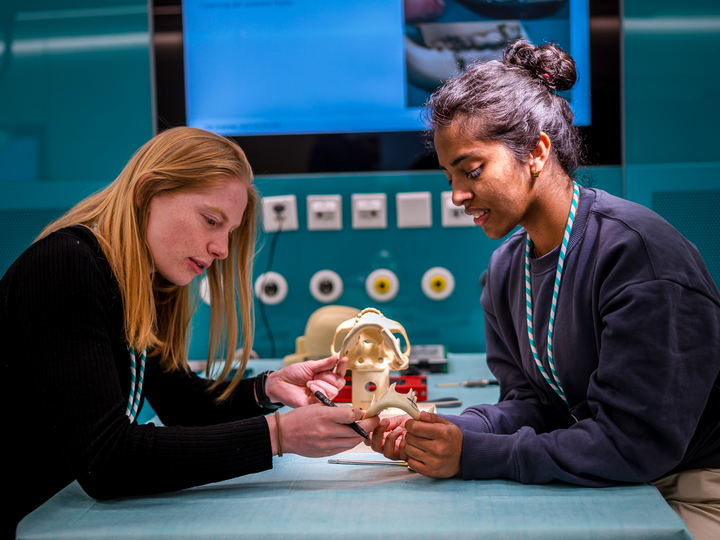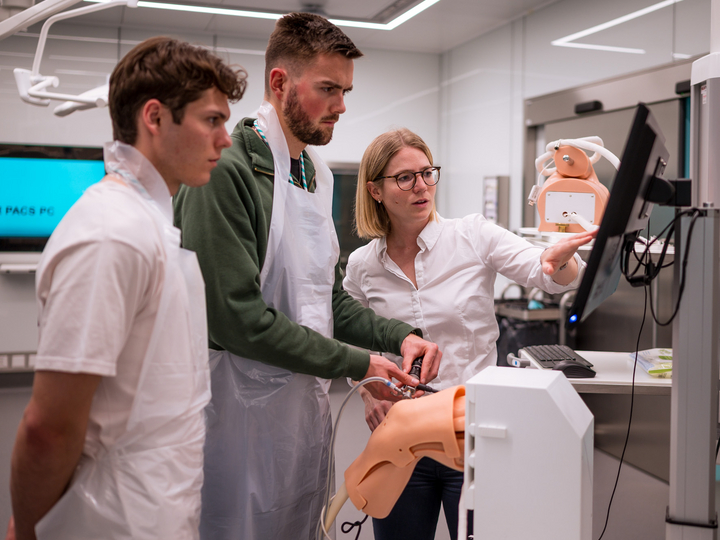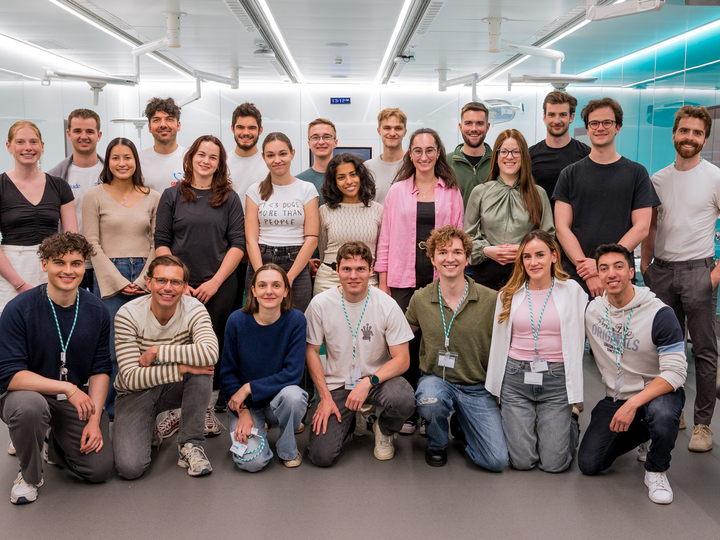Before anyone picks up a scalpel, one thing is clear: precision begins with preparation. On day one, the focus was on surgical hygiene, sterile techniques, and interprofessional teamwork, key foundations introduced by surgical technicians from Careum, the University Hospital Zurich, and Hospital Triemli.
In a fully equipped OR setting, students learned how to properly disinfect the surgical field, gown and glove under sterile conditions, and communicate effectively under pressure. Far from passive observation, each student practised every step repeatedly until it became second nature. What may seem like routine protocols quickly proved to be formative experiences, instilling discipline, a deep sense of responsibility, and respect for the surgical environment. These early moments laid the groundwork for everything that followed.
Where Surgical Training Gets Real
As the course progressed, so did the complexity of the skills. In small groups, students moved from foundational techniques to real surgical tasks including knot tying, suturing, arthroscopy, anatomical dissection, and trauma protocols. Along the way, they were introduced to the instruments and methods used across various specialties.
Each module offered more than just hands-on practice; it opened a window into the realities of working in that surgical field. Whether managing paediatric patients, reconstructing facial structures, or navigating the intricacies of cardiac anatomy, students gained authentic insight into clinical decision-making and teamwork. The faculty fostered an environment where questions were welcome, feedback was constructive, and mistakes were seen as a vital part of learning, helping students develop not just skill, but confidence and resilience.
